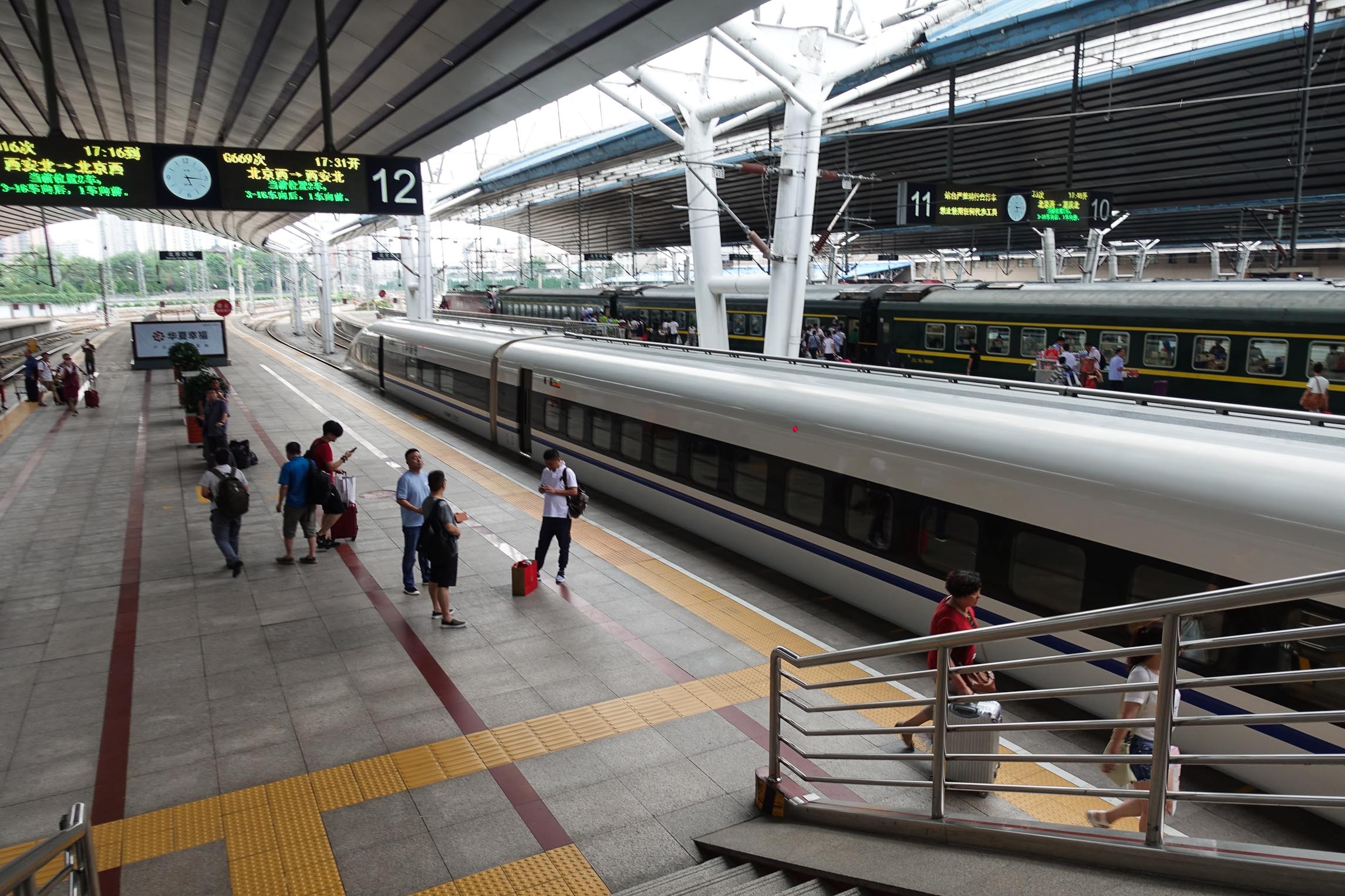Ez a napunk utazással telt, délután repültünk Chengdu-ba, így semmi érdekeset nem láttunk, amiről beszámolhatnánk. Cserébe írunk egy kicsit a Kínában tapasztalt közlekedésről.
This day was spent with traveling, our flight was in the early afternoon so we weren’t able to see anything very interesting. Instead we’ll write a bit about getting around in China.
Közlekedés | Transportation
A városokban busszal és metróval lehet menni, a buszok elég egyszerűen működnek, vagy van bérleted, amit le tudsz csippantani vagy felszálláskor fizetsz a sofőrnél: 1 yuan-t (40 Ft-ot) ha nem légkondis és 2 yuant (80 Ft-ot) ha légkondis a busz. Szóval a buszos közlekedés nagyon olcsó, hátránya ugyan az, mint máshol: dugóban lassú. Másik dolog amire nap mint nap oda kell figyelnünk az az hogy legyen nálunk apró pénz mivel nem adnak vissza (egy dobozba kell bedobni a pénzt). Mi szeretjük a buszokat és gyakran utazunk velük.
In cities there are buses and underground lines, the buses are quite simple, either you have a local contactless pass that you can touch in with or you pay at the front door: 1 yuan (10p) if the bus isn’t air-conditioned and 2 yuan (20p) if the bus is. So getting around with bus is very cheap although has the disadvantage that it can get stuck in big traffic jams. Another thing we need to keep in mind during the day is to have enough small bills since they don’t give change (you have to throw the money into a box). We like the buses and regularly take them.
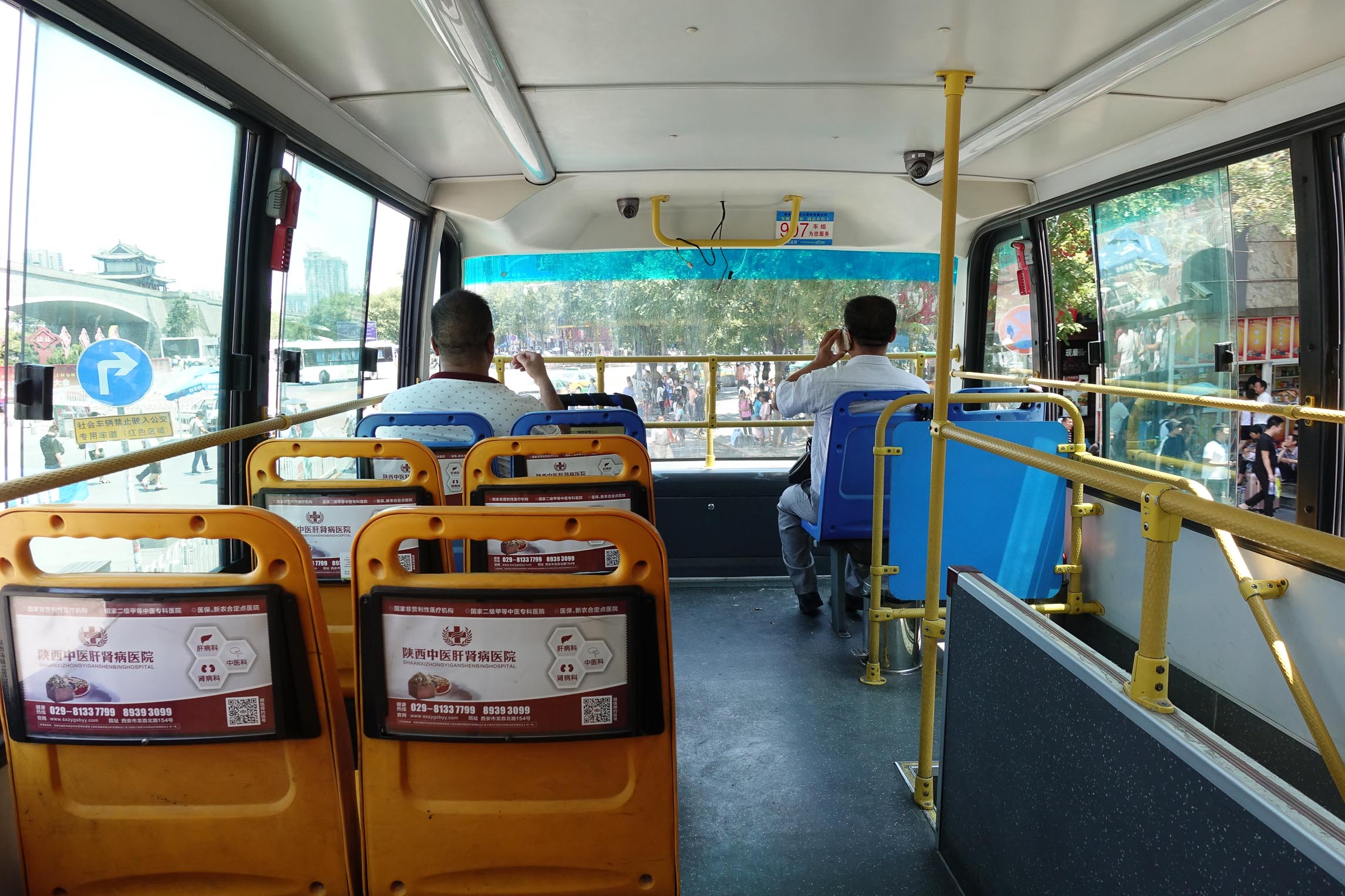
Még két emeletes busz is volt | There were even double decker buses
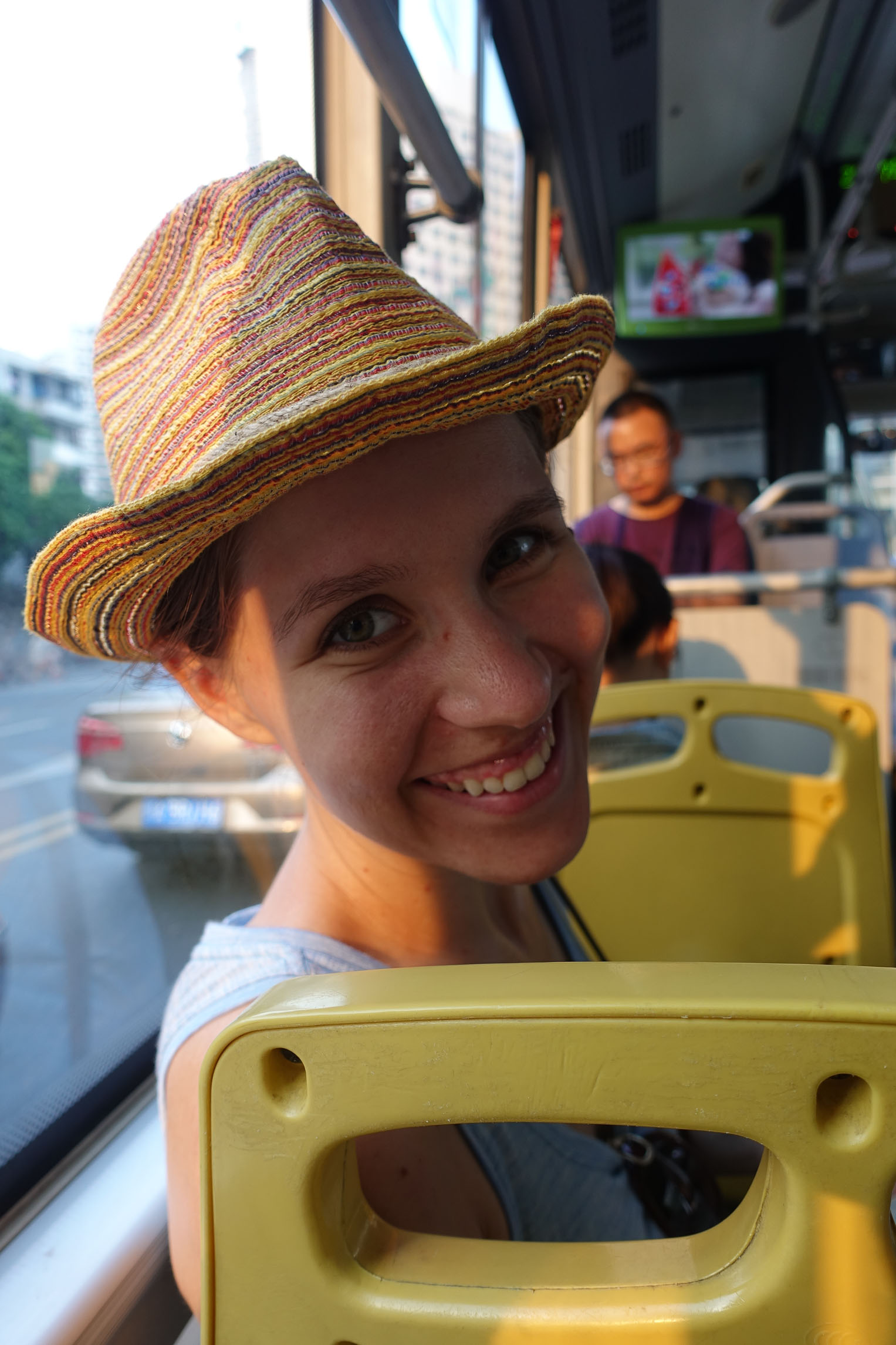
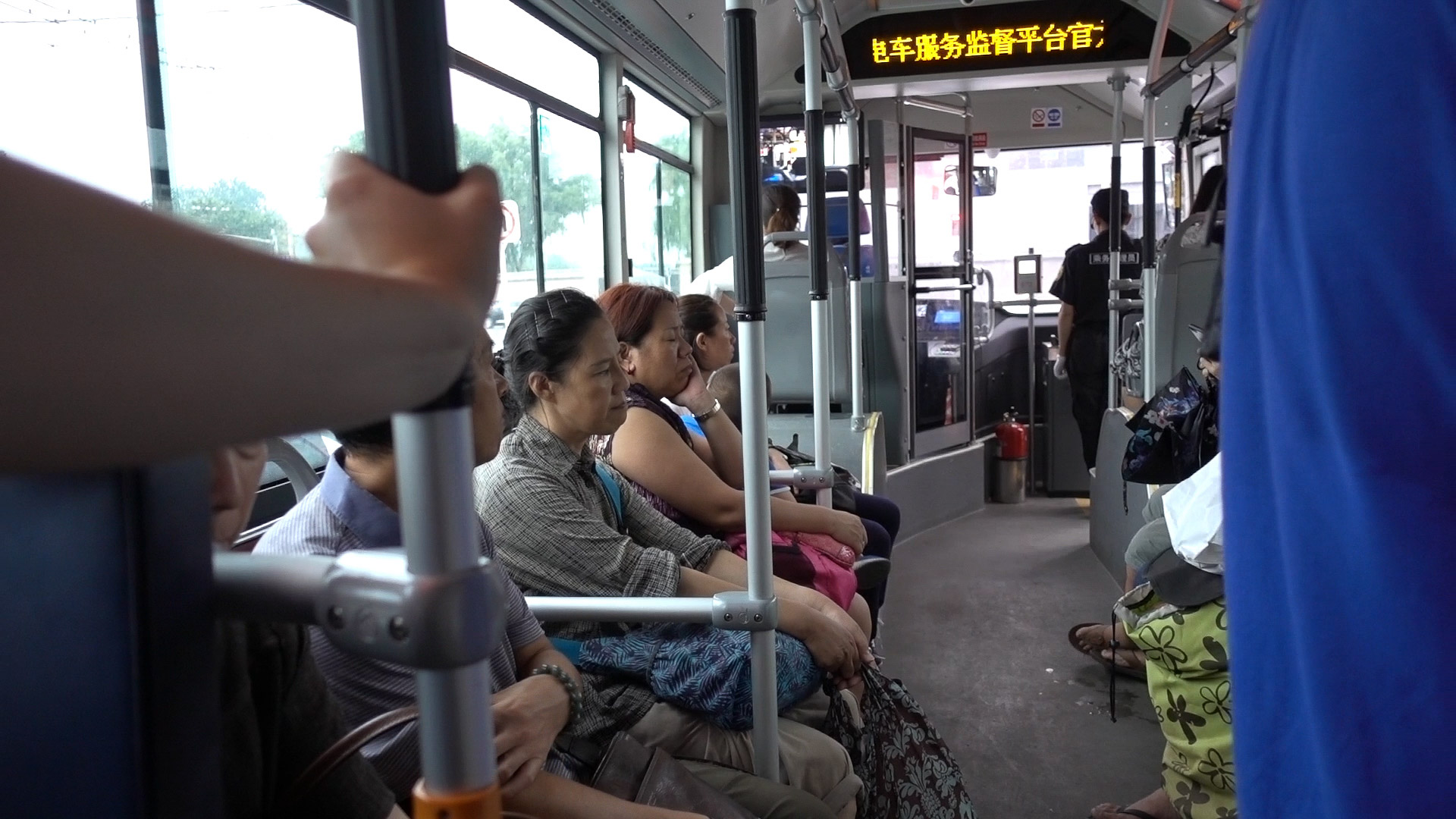
Metró | Tube
A legtöbb városban van metró, amivel gyorsan el lehet jutni A-ból B-be. A metró területére lépéskor át kell menni egy biztonsági ellenőrzésen, ami a táskák átvilágítását jelenti, illetve gyakran kérik, hogy igyál a vizedből, bizonyítva, hogy nem robbanóanyag. A jobb helyeken már van kézi készülék, ami ezt meghatározza. Automatákból lehet jegyet venni, de szerencsére elég egyértelmű ezeket használni. Ki kell választani azt az állomást, ahova menni akarunk és kiírja, hogy mennyibe fog kerülni. A jegy árak kb. 3 és 8 yuan (120-310 Ft) között mozognak, attól függően hogy hány megállót megyünk. A helyiek itt is főleg csippantós bérlettel mennek. A kocsikon LED-es kijelzőkön lehet látni, hogy hol vagyunk és mi a következő megálló, illetve még azt is, hogy melyik oldalt fog nyílni az ajtó.
In most cities there’s an extensive tube system which we can use to get from one side of the city to the other. You need to pass through security when entering the underground, which means that they x-ray your backpacks, wave a metal detector wand around you and even ask you to take a sip of your water to prove that it’s not some kind of explosive. The better stations already have a machine to screen the water bottles. You can buy tickets from machines, but thankfully they’re easy to us as they have an English menu. You just need to select your end station (it assumes your starting station is the current one) and then it tells you how much it’s going to to cost. The prices are between 3 and 8 yuan (10p-90p) depending on how far you’re going to travel. The locals usually are using their contactless Oyster-like cards. In the trains there’s a LED screen indicating the current and next stations, all of them having English names as well so figuring out when to get off is again dead simple. It even tells you which side the door will open!
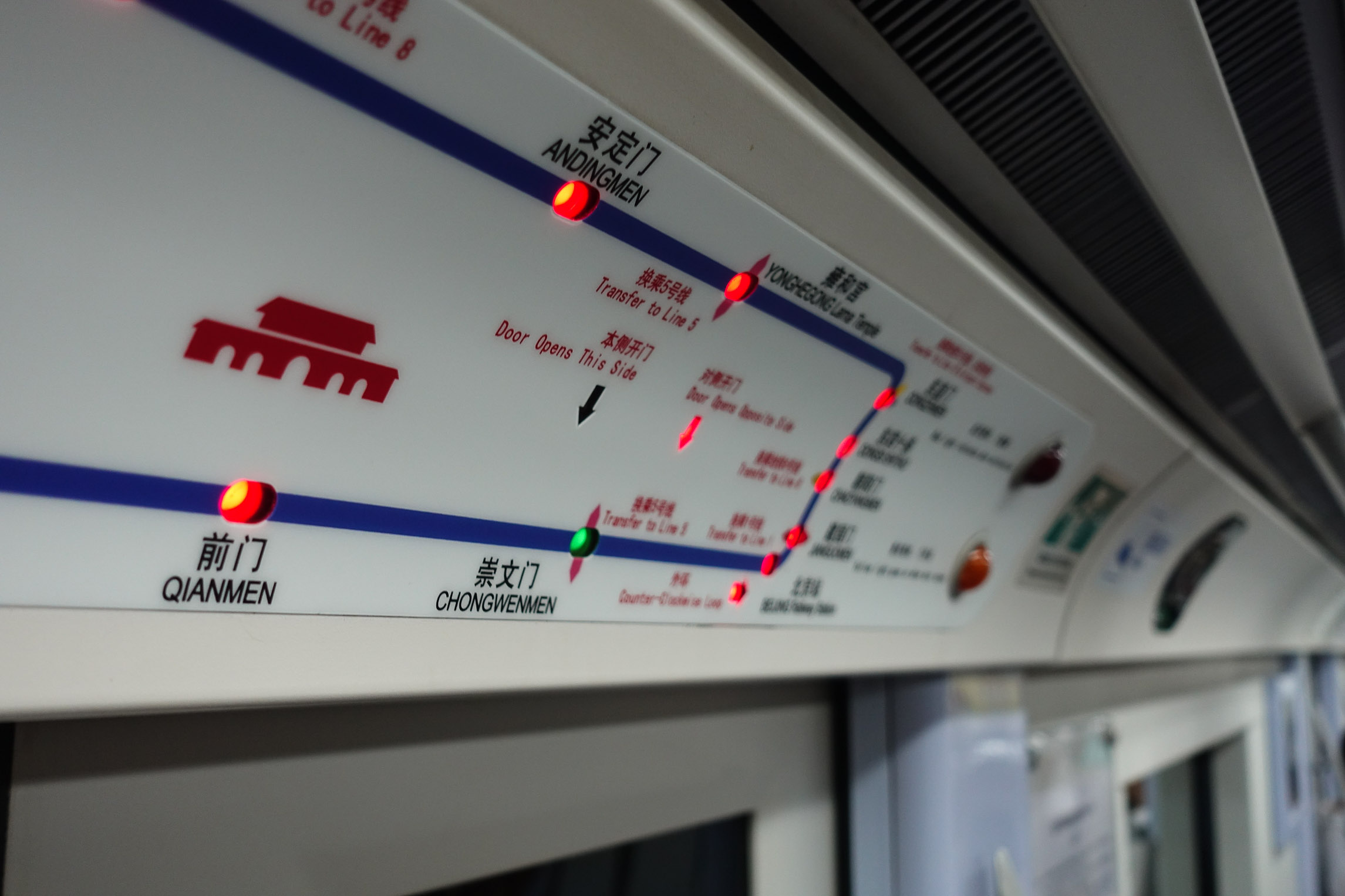
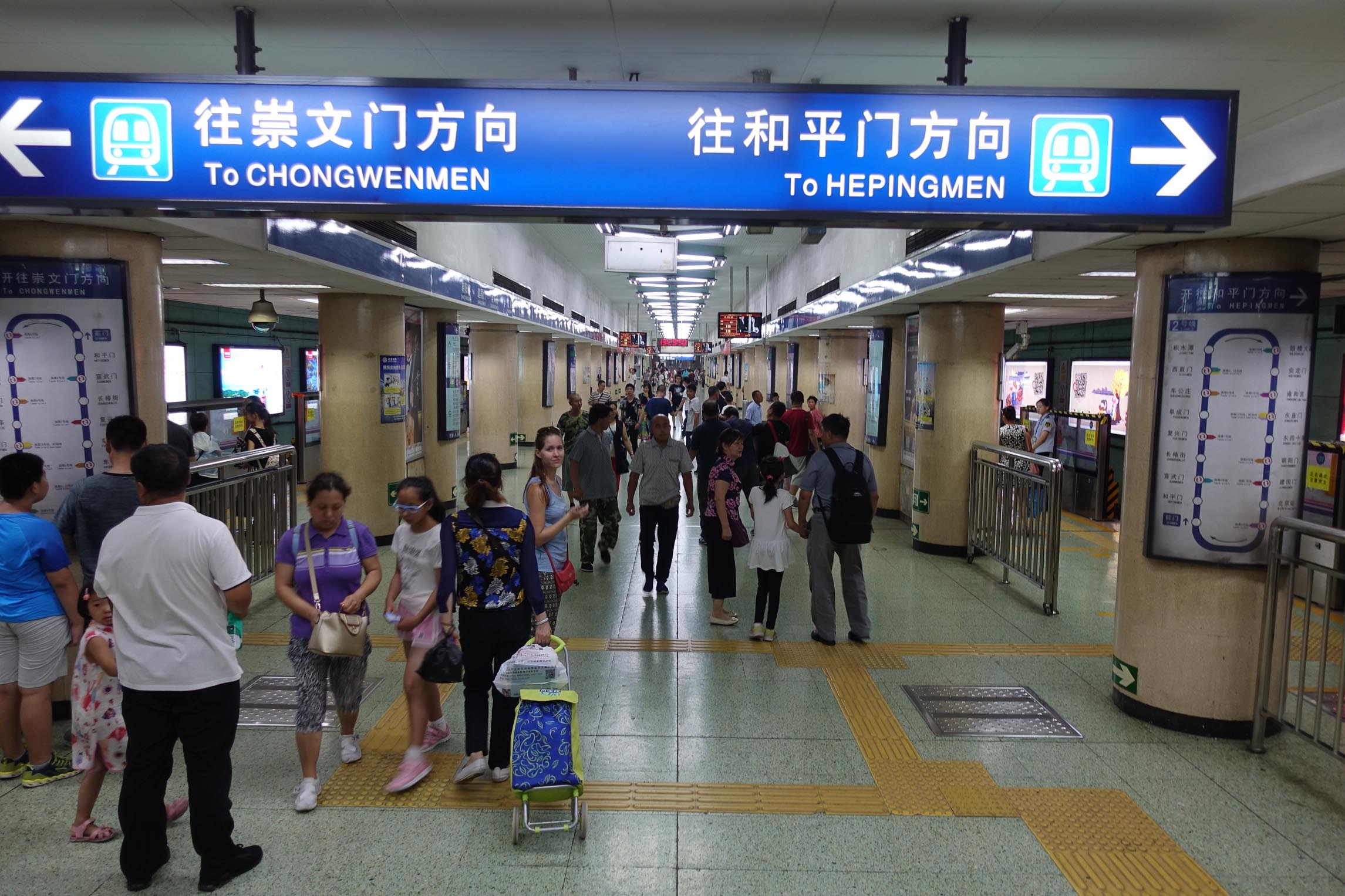
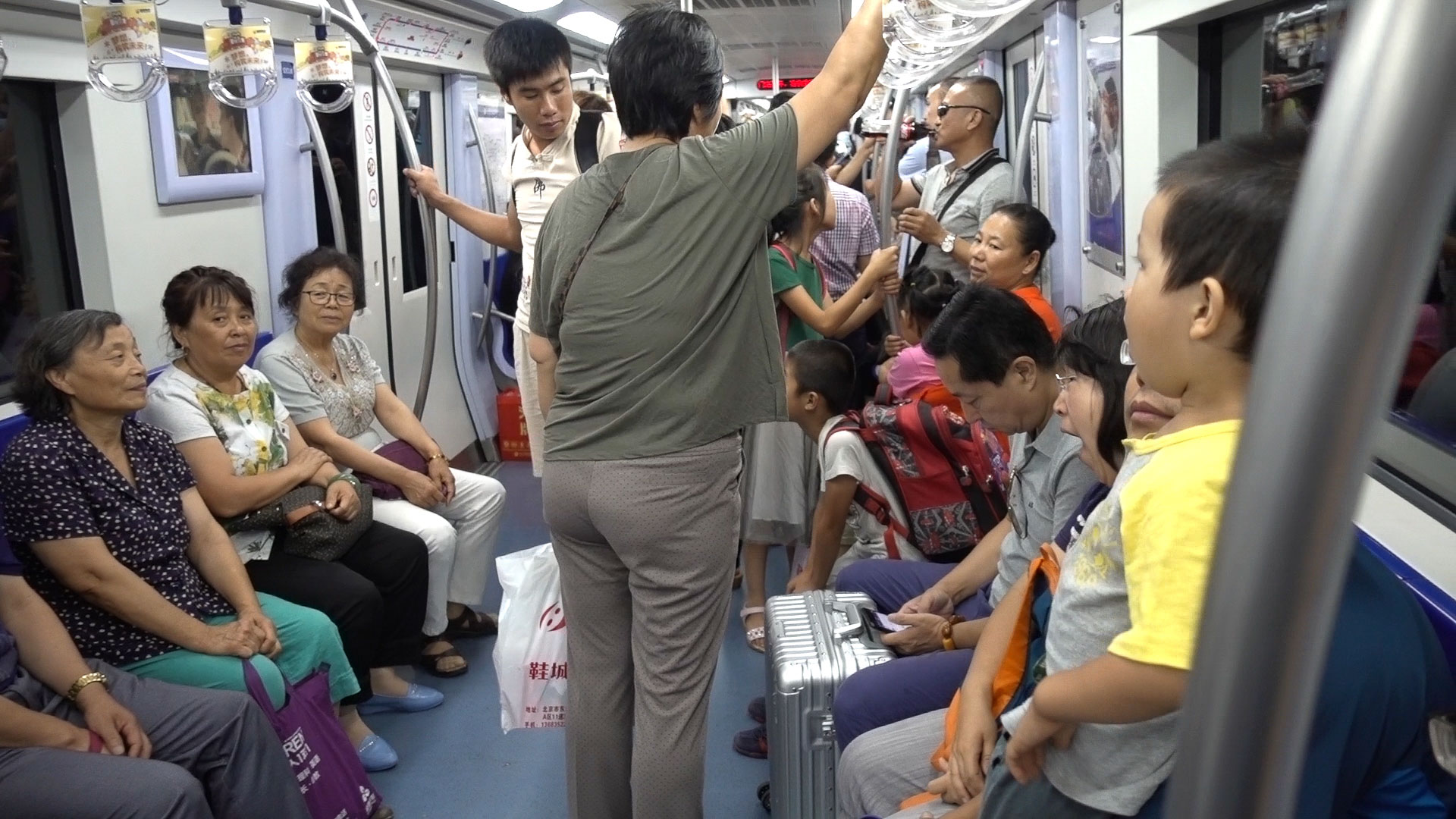
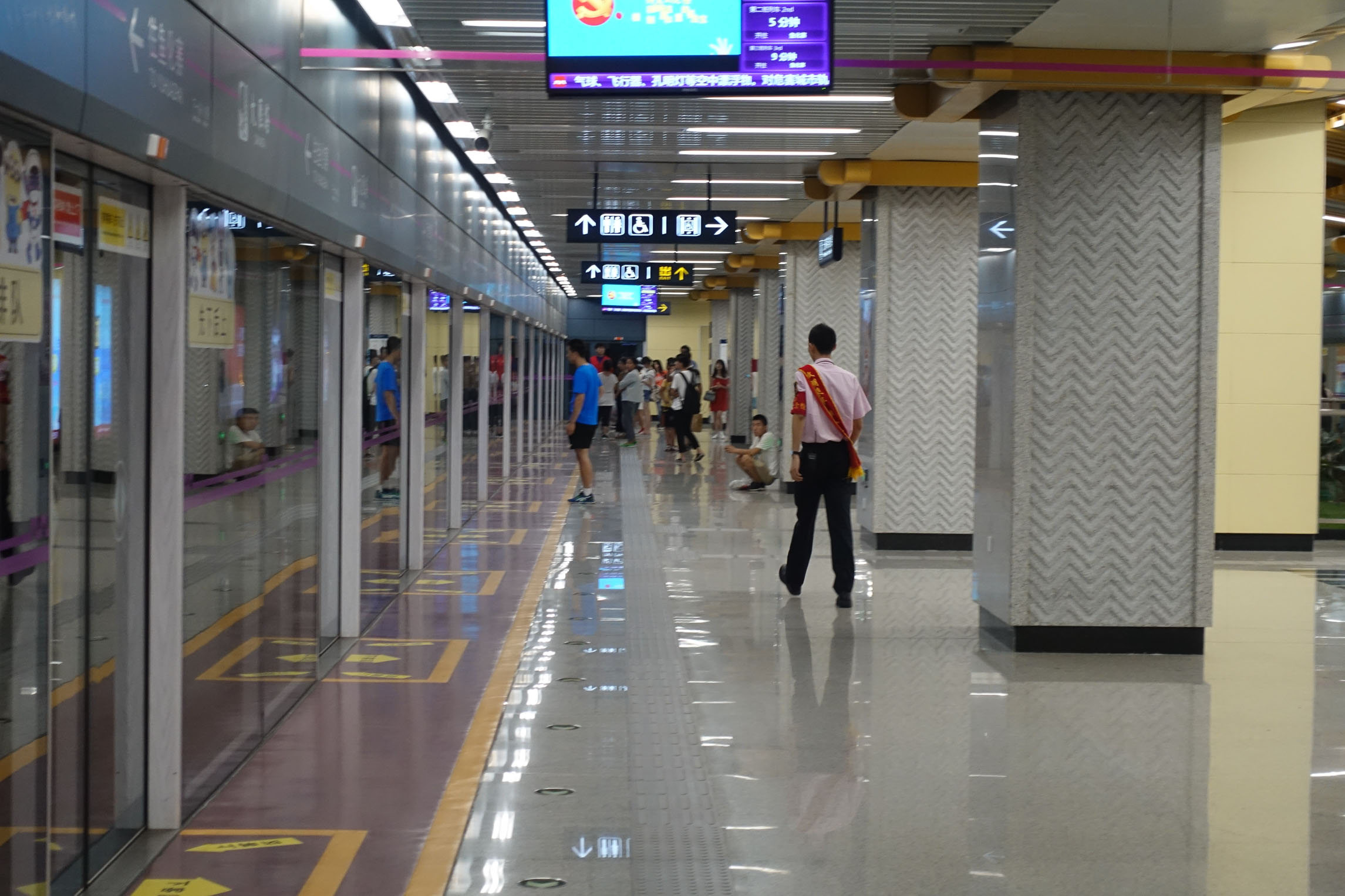
Robogók | Mopeds
A helyiek többsége robogóval vagy biciklivel közlekedik. A legtöbb robogó (legalább 95%) már elektromos, így alig hallani őket, sokkal jobban körbe kell nézni, mert senki sem figyeli a másikat, és a robogók simán átmennek a piros lámpán és a járdán is. Ezeken mindent és mindenkit tudnak vinni magukkal, néhány yuan-ért akár taxiként is működik a rendszer. A tűző nap vagy épp az eső ellen sokan felszerelnek napernyőket, vagy már majdnem sátor szerű vázas anyagokat. Ezen kívül sok ember visel csak ruhaujjat, amit felhúznak a kezükre, hogy ne égjenek le, sőt van külön robogóra kifejlesztett esőkabátjuk is, szóval midnent lehet kapni, ami kellhet.
Most of the locals get around with either a moped or a bicycle. Most mopeds (at least 95%) are already electric so they’re silent, meaning we need to look around very carefully when changing direction as they usually cross red lights and ride on the pavement. They carry an incredible diversity of thing on mopeds and we even heard that they would taxi us as well for a few yuans. To protect against the sun many mopeds have built in umbrellas or wear sleeves on their arms.
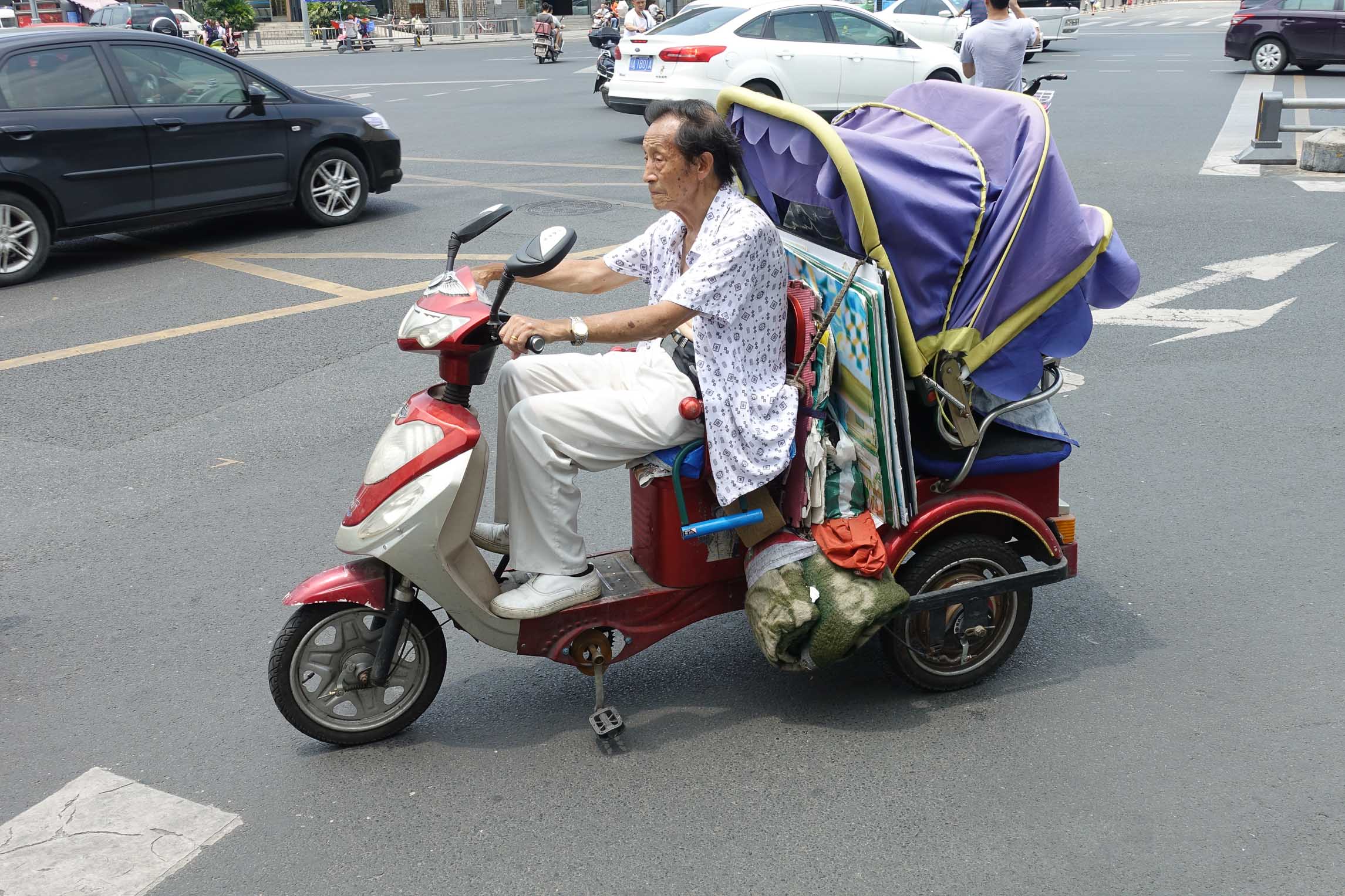
Biciklik | Bicycles
A biciklikről azt mondják, hogy Pekingben annyi van, ahány ember – és sokan is használják. Néhány éve több cég bevonult és kiépítettek egy rendszert, mint Budapesten a BUBI-t, annyi különbséggel, hogy nem kell külön dokkoló állomás, hanem a láncszerkezeten van egy zár, így bárhol bármikor fel lehet egyre ülni és a célállomáson hagyni az utcán. Minden biciklin van egy QR-kód, amit a megfelelő cég mobil alkalmazással beolvasva megkapjuk a kódot, ami oldja a zárat. A két legnagyobb cég amit látunk: ofo (sárga) és mobike (narancssárga). A nagyobb városokban az utak mellett fut egy szervíz út, ahol a robogók és biciklik tudnak menni, így tényleg a leggyorsabb közlekedési eszközökké váltak.
They say there are as much bicycles in Beijing as people. A few years ago a few companies built up a system like the ones in European cities with the major difference that there’s no docking station - you can leave your bike anywhere and it locks itself by the wheel. Every bike has a QR code that when scanned with the right company’s app produces a number that unlocks the bike. The two most popular bike companies that we saw were ofo (yellow bikes) and mobike (orange bikes), The bigger cities have a special lane next to the street for bikes and moped therefore turning these two-wheelers into the quickest mode of transportation.
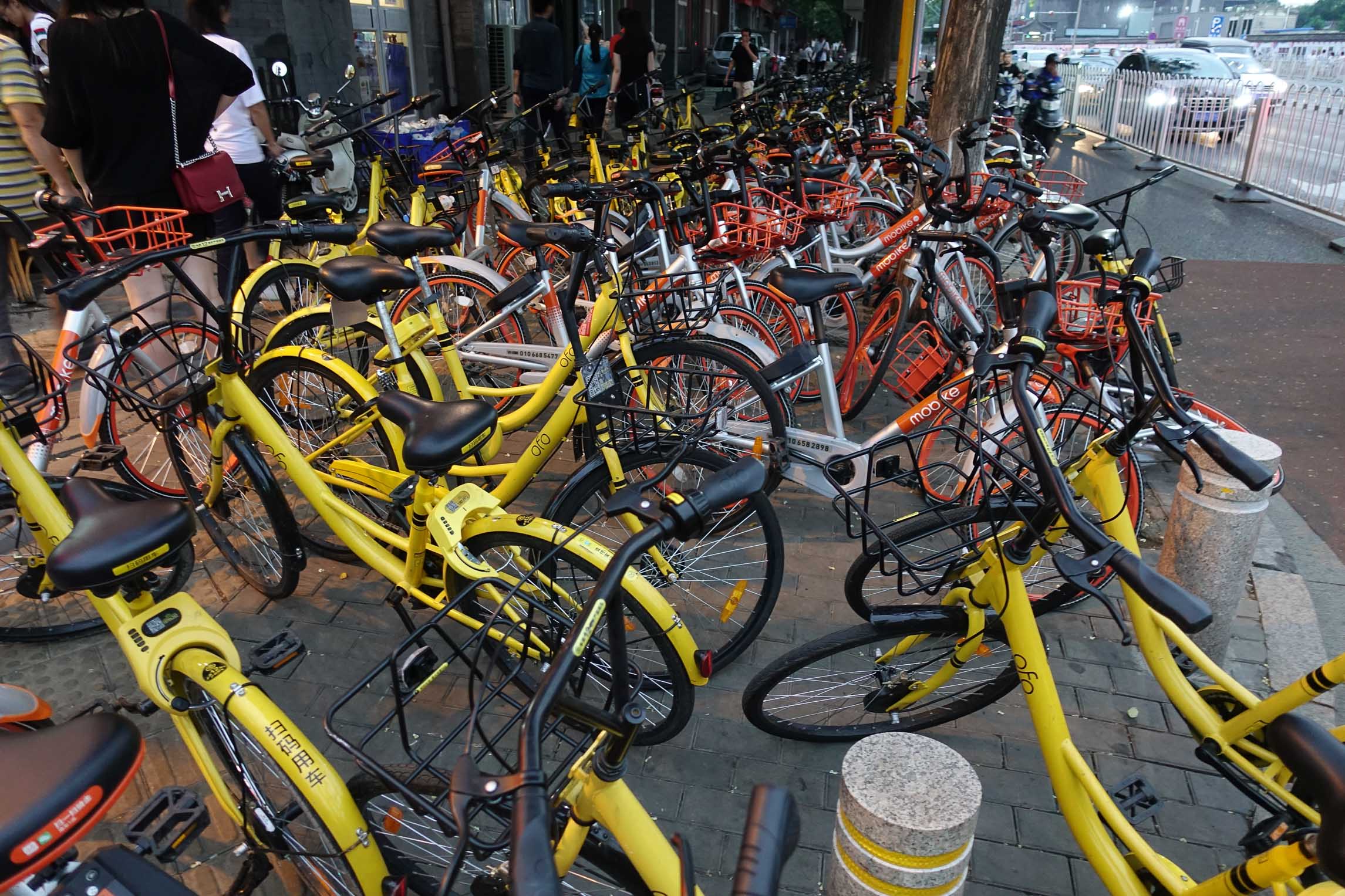
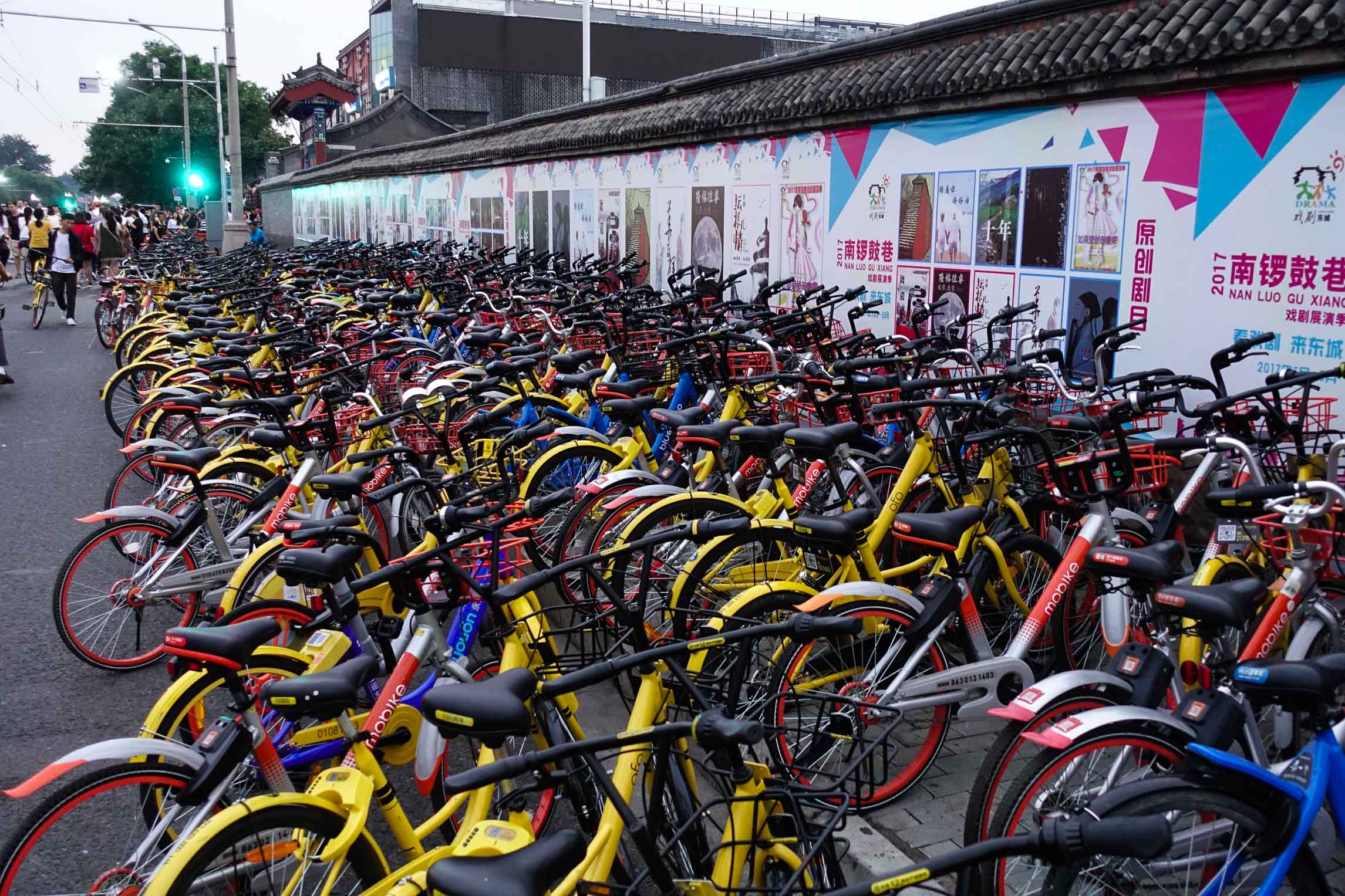
Vonatok | Trains
A vonatozás kicsit trükkösebb külföldiként, mivel ahhoz, hogy megkapjuk a jegyünket be kell mutatni az útlevelünket. Jegyeket könnyen lehet online is venni, de az elővételes jegyeket is csak a kasszákban lehet beváltani nekünk. Ott általában nagy a sor - amikor a Chengdu - Leshan vonat jegyet vettük majdnem egy órát álltunk sorba. Így mindenképp érdemes akár egy nappal a vonatozás előtt kiváltani őket a nagy városokban. Az állomásra csak jegy és biztonsági ellenőrzés után lehet bejutni, a jegyeket lepecsételik, a táskákat átvilágítják. A nagyobb állomásokon úgy nevezett várótermek vannak (néha ez csak egy kapu, ami előtt sorba kell állni), ahol ismét ellenőrzik a jegyet, csak utána lehet menni a vágányra. A szupergyors vonatok kényelmesek, lehet enni a büfékocsiban vagy a mászkáló árusoktól venni nasikat. Angolul is mindent bemondanak, és pontosak. A kisebb helyi vonatokat még nem próbáltuk ki.
Taking trains is a bit trickier as a foreigner since we need to present our passports to get our tickets and can’t buy tickets online and pick them up at the machines. This means that we need to queue at the ticket counters where there’s usually a very large queue: for our ticket from Chengdu to Leshan we waited for about an hour. So it’s definitely worthwhile to pick up the tickets a day in advance. To get into the station there’s a ticket inspection and a security as well. Inside, instead of heading directly to the platform, there’s usually a waiting area for platforms, where there’s another ticket inspection starting 10-15 minutes before the train leaves. The bullet trains are comfortable even on second class, you can buy food from the restaurant car or from the carts going around. They announce everything in English and train has always been on time for us. We haven’t yet tried out a slower, non-bullet train yet.
